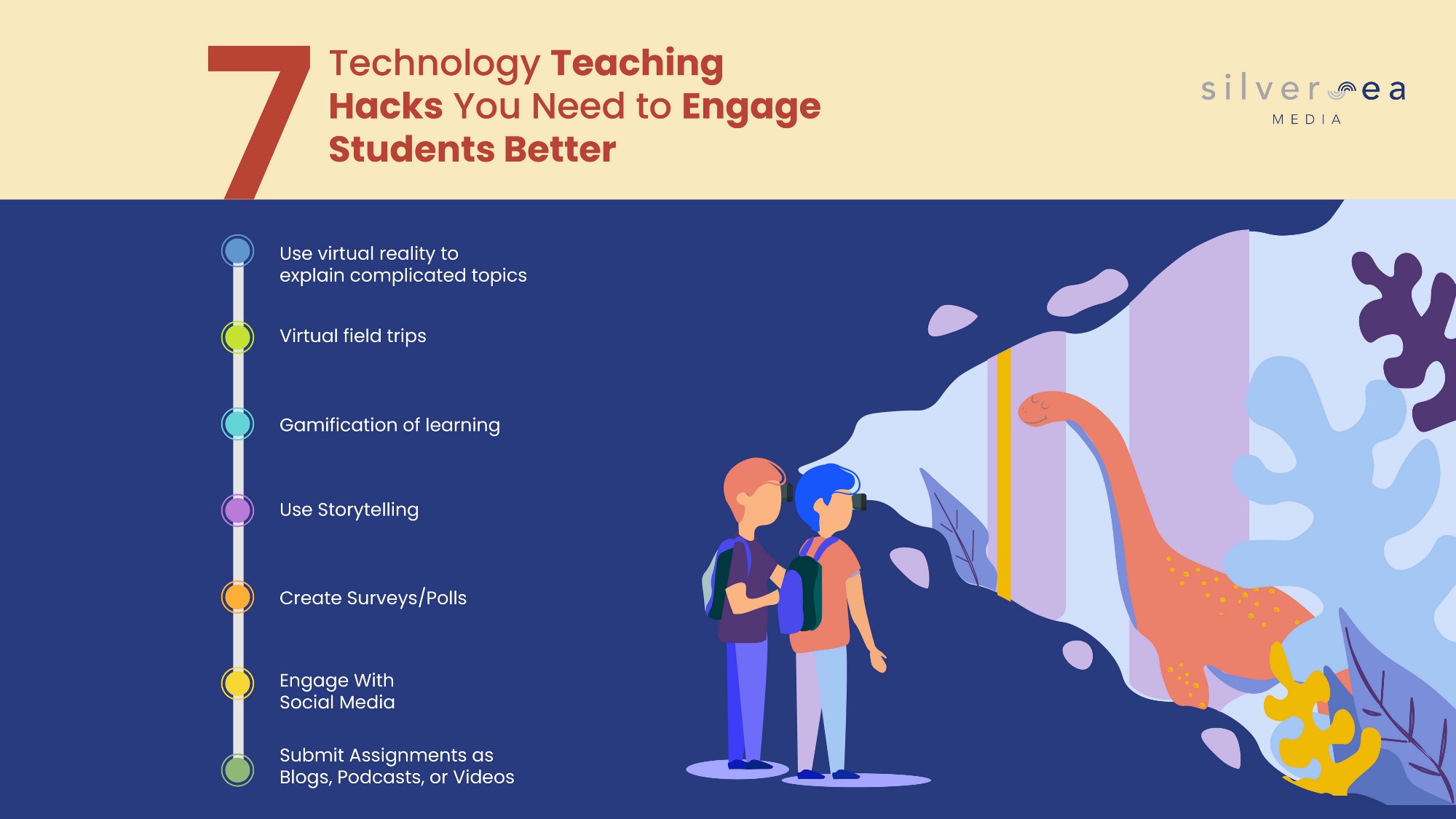Today’s students grew up in the digital age. To make sure that students are getting the most out of every lesson, the content should be presented in a way that the work has a clear meaning and immediate value to your students. The more students are engaged, the more they learn, and the more they achieve.
Here’s a look at some interesting ways to boost student engagement through technology:
1. Use Virtual Reality/Augmented Reality to Explain Complicated Topics
This highly interactive tool opens up realms of possibility, allowing students to experience learning in a way never previously possible. Virtual Reality Technologies help students clearly understand complicated concepts, which makes retaining complex information become easier, more efficient, and more fun.
The very nature of VR being framed inside a headset means that the learner is less prone to distractions in their physical surroundings. Students can actually be inside of the experience and see in 3D what they would have previously only seen in a photo or illustrations. For example, students can take a 3D tour of the human body, a 360º virtual tour of an active volcano, or virtually visit different places and times.
2. Virtual Field Trips
Virtual field trips allow children to safely visit places around the world without leaving their homes or classrooms. VR brings the excitement and enthusiasm of exploring new places directly into your current location. While taking multiple field trips throughout the school year can be expensive, a virtual field trip is practically free. A lot of destinations have created online field trips and educational resources that allow people to explore zoos, museums, and other exciting places.
Presence as the true magic of VR allows you to live a story than being a passive observer. It has the potential to make students think, feel, and even change their behaviour.
Learn more about the use of Virtual Reality in education: www.silvrgrow.com
3. Gamification of Learning
Digital games can communicate new material, make learning more fun, and make it easier for students with disability or special needs to participate. From virtual scavenger hunts to software-based learning games, there is no end to the number of ways that gamified learning can be a valuable means of enhancing student engagement. By tapping into students’ competitiveness, this kind of technology also encourages students to work harder than they otherwise might.
4. Use Storytelling
Stories are a great way to promote a culture of collaboration among the students. Digital storytelling, particularly, is a method that involves user-contributed content using various multimedia tools and platforms. It allows technology users to become creative storytellers and enhances their communication by conducting research, writing, expressing ideas, solving problems and building meaningful narratives. Getting students to work in groups and compose stories using media including digital images, videos, and music is a great way to create a significant impact on increasing students’ motivation and retention of content.

5. Create Surveys/Polls
What better way to find out what students are looking forward to than to ask? Creating simple guides and survey questionnaires around concepts can boost interest and engagement tremendously. You can create a classroom community blog or a class webpage where children can put up their ideas/presentations/pictures of projects and the technology they are most excited to use.
6. Engage With Social Media
When social media is introduced into a lesson, that lesson is no longer confined to the classroom. Each social media platform provides different ways to be used in education, from sharing announcements to holding live lectures, and so much more. For example, students can use Instagram to present a series of photos or graphics in a visually appealing manner. You can also create unique classroom hashtags on Twitter and have students tweet the things they learned in class to measure attention and engagement levels. The 280 character limit makes students think critically on communicating concisely and effectively.
7. Submit Assignments as Blogs, Podcasts, or Videos
Rather than having students deliver old-fashioned paper essays, teachers can encourage students to use technology to demonstrate their learning. Media such as podcasts, videos, and blogs allow students to develop new skills and display their creativity. Blogs as a semester or a year long assignment, for example, can improve students’ writing and critical thinking.
With most smartphones having voice recording apps, it’s easy to make podcasts which can then be shared on social platforms. Give students a list of topics/key phrases and give a reward for the student whose podcast episode covers the most keywords.

Students learn best in environments that are safe and fun where they are challenged and supported with the tools necessary to surmount these challenges. Giving students access to educational technology, along with attentive instruction and opportunities to learn to use it safely and effectively, is also the best way to set them up for success in our digital world.
Improve academic growth and student engagement using technology now: www.silvrgrow.com/contact-us




